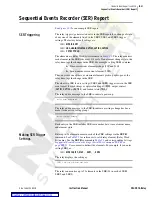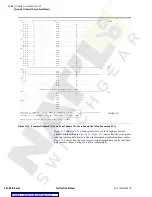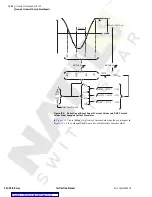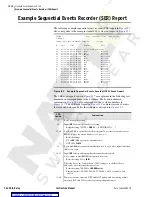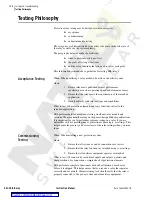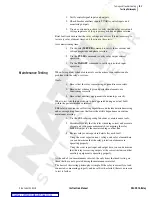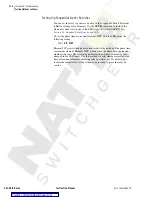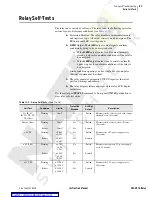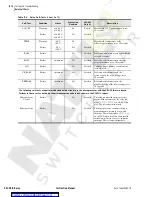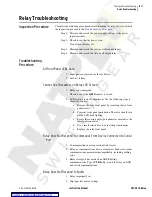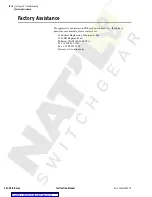
13.2
SEL-351A Relay
Instruction Manual
Date Code 20080213
Testing and Troubleshooting
Testing Philosophy
Testing Philosophy
Protective relay testing may be divided into three categories:
➤
acceptance
➤
commissioning
➤
and maintenance testing
The categories are differentiated by when they take place in the life cycle of
the relay as well as by the test complexity.
The paragraphs below describe the following:
➤
when to perform each type of test
➤
the goals of testing at that time
➤
and the relay functions that you need to test at each point.
This information is intended as a guideline for testing SEL relays.
Acceptance Testing
When: When qualifying a relay model to be used on the utility system.
Goals:
1. Ensure relay meets published critical performance
specifications such as operating speed and element accuracy.
2. Ensure that the relay meets the requirements of the intended
application.
3. Gain familiarity with relay settings and capabilities.
What to test: All protection elements and logic functions critical to the
intended application.
SEL performs detailed acceptance testing on all new relay models and
versions. We are certain the relays we ship meet their published specifications.
It is important for you to perform acceptance testing on a relay if you are
unfamiliar with its operating theory, protection scheme logic, or settings. This
helps ensure the accuracy and correctness of the relay settings when you issue
them.
Commissioning
Testing
When: When installing a new protection system.
Goals:
1. Ensure that all system ac and dc connections are correct.
2. Ensure that the relay functions as intended using your settings.
3. Ensure that all auxiliary equipment operates as intended.
What to test: All connected or monitored inputs and outputs, polarity and
phase rotation of ac connections, simple check of protection elements.
SEL performs a complete functional check and calibration of each relay
before it is shipped. This helps ensure that you receive a relay that operates
correctly and accurately. Commissioning tests should verify that the relay is
properly connected to the power system and all auxiliary equipment.
Summary of Contents for SEL-351A
Page 10: ...This page intentionally left blank Courtesy of NationalSwitchgear com ...
Page 16: ...This page intentionally left blank Courtesy of NationalSwitchgear com ...
Page 34: ...This page intentionally left blank Courtesy of NationalSwitchgear com ...
Page 126: ...This page intentionally left blank Courtesy of NationalSwitchgear com ...
Page 184: ...This page intentionally left blank Courtesy of NationalSwitchgear com ...
Page 198: ...This page intentionally left blank Courtesy of NationalSwitchgear com ...
Page 228: ...This page intentionally left blank Courtesy of NationalSwitchgear com ...
Page 278: ...This page intentionally left blank Courtesy of NationalSwitchgear com ...
Page 384: ...This page intentionally left blank Courtesy of NationalSwitchgear com ...
Page 410: ...This page intentionally left blank Courtesy of NationalSwitchgear com ...
Page 450: ...This page intentionally left blank Courtesy of NationalSwitchgear com ...
Page 454: ...This page intentionally left blank Courtesy of NationalSwitchgear com ...
Page 472: ...This page intentionally left blank Courtesy of NationalSwitchgear com ...
Page 504: ...This page intentionally left blank Courtesy of NationalSwitchgear com ...
Page 558: ...This page intentionally left blank Courtesy of NationalSwitchgear com ...
Page 562: ...This page intentionally left blank Courtesy of NationalSwitchgear com ...
Page 586: ...This page intentionally left blank Courtesy of NationalSwitchgear com ...
Page 608: ...This page intentionally left blank Courtesy of NationalSwitchgear com ...
Page 666: ...This page intentionally left blank Courtesy of NationalSwitchgear com ...


